Introduction to Probability Models
Eleventh Edition
�
Introduction to Probability
Models
Eleventh Edition
Sheldon M. Ross
University of Southern California
Los Angeles, California
AMSTERDAM • BOSTON • HEIDELBERG • LONDON • NEW YORK
OXFORD • PARIS • SAN DIEGO • SAN FRANCISCO • SINGAPORE
SYDNEY • TOKYO
Academic Press is an Imprint of Elsevier
�
Academic Press is an imprint of Elsevier
The Boulevard, Langford Lane, Kidlington, Oxford OX5 1GB, UK
Radarweg 29, PO Box 211, 1000 AE Amsterdam, The Netherlands
225 Wyman Street, Waltham, MA 02451, USA
525 B Street, Suite 1800, San Diego, CA 92101-4495, USA
Eleventh edition 2014
Tenth Edition: 2010
Ninth Edition: 2007
Eighth Edition: 2003, 2000, 1997, 1993, 1989, 1985, 1980, 1972
Copyright © 2014 Elsevier Inc. All rights reserved.
No part of this publication may be reproduced, stored in a retrieval system or transmitted
in any form or by any means electronic, mechanical, photocopying, recording or otherwise
without the prior written permission of the publisher Permissions may be sought directly
from Elsevier’s Science & Technology Rights Department in Oxford, UK: phone (+44) (0)
1865 843830; fax (+44) (0) 1865 853333; email: permissions@elsevier.com. Alternatively
you can submit your request online by visiting the Elsevier web site at http://elsevier.com/
locate/permissions, and selecting Obtaining permission to use Elsevier material.
Notice
No responsibility is assumed by the publisher for any injury and/or damage to persons
or property as a matter of products liability, negligence or otherwise, or from any use or
operation of any methods, products, instructions or ideas contained in the material herein.
Because of rapid advances in the medical sciences, in particular, independent verification
of diagnoses and drug dosages should be made.
Library of Congress Cataloging-in-Publication Data
Ross, Sheldon M., author.
Introduction to probability models / by Sheldon Ross. – Eleventh edition.
pages cm
Includes bibliographical references and index.
ISBN 978-0-12-407948-9
1. Probabilities. I. Title.
QA273.R84 2014
519.2–dc23
2013035819
British Library Cataloguing in Publication Data
A catalogue record for this book is available from the British Library
ISBN: 978-0-12-407948-9
For information on all Academic Press publications
visit our web site at store.elsevier.com
Printed and bound in USA
14 15 16 17 18 10 9 8 7 6 5 4 3 2 1
�
Preface
This text is intended as an introduction to elementary probability theory and stochastic
processes. It is particularly well suited for those wanting to see how probability theory
can be applied to the study of phenomena in fields such as engineering, computer sci-
ence, management science, the physical and social sciences, and operations research.
It is generally felt that there are two approaches to the study of probability theory.
One approach is heuristic and nonrigorous and attempts to develop in the student an
intuitive feel for the subject that enables him or her to “think probabilistically.” The
other approach attempts a rigorous development of probability by using the tools of
measure theory. It is the first approach that is employed in this text. However, because
it is extremely important in both understanding and applying probability theory to be
able to “think probabilistically,” this text should also be useful to students interested
primarily in the second approach.
New to This Edition
The tenth edition includes new text material, examples, and exercises chosen not only
for their inherent interest and applicability but also for their usefulness in strengthen-
ing the reader’s probabilistic knowledge and intuition. The new text material includes
Section 2.7, which builds on the inclusion/exclusion identity to find the distribution
of the number of events that occur; and Section 3.6.6 on left skip free random walks,
which can be used to model the fortunes of an investor (or gambler) who always
invests 1 and then receives a nonnegative integral return. Section 4.2 has additional
material on Markov chains that shows how to modify a given chain when trying to
determine such things as the probability that the chain ever enters a given class of
states by some time, or the conditional distribution of the state at some time given that
the class has never been entered. A new remark in Section 7.2 shows that results from
the classical insurance ruin model also hold in other important ruin models. There is
new material on exponential queueing models, including, in Section 2.2, a determina-
tion of the mean and variance of the number of lost customers in a busy period of a
finite capacity queue, as well as the new Section 8.3.3 on birth and death queueing
models. Section 11.8.2 gives a new approach that can be used to simulate the exact
stationary distribution of a Markov chain that satisfies a certain property.
Among the newly added examples are 1.11, which is concerned with a multiple
player gambling problem; 3.20, which finds the variance in the matching rounds
problem; 3.30, which deals with the characteristics of a random selection from a
population; and 4.25, which deals with the stationary distribution of a Markov chain.
�
xii
Preface
Course
Ideally, this text would be used in a one-year course in probability models. Other
possible courses would be a one-semester course in introductory probability theory
(involving Chapters 1–3 and parts of others) or a course in elementary stochastic
processes. The textbook is designed to be flexible enough to be used in a variety of
possible courses. For example, I have used Chapters 5 and 8, with smatterings from
Chapters 4 and 6, as the basis of an introductory course in queueing theory.
Examples and Exercises
Many examples are worked out throughout the text, and there are also a large number
of exercises to be solved by students. More than 100 of these exercises have been
starred and their solutions provided at the end of the text. These starred problems can
be used for independent study and test preparation. An Instructor’s Manual, contain-
ing solutions to all exercises, is available free to instructors who adopt the book for
class.
Organization
Chapters 1 and 2 deal with basic ideas of probability theory. In Chapter 1 an axiomatic
framework is presented, while in Chapter 2 the important concept of a random vari-
able is introduced. Section 2.6.1 gives a simple derivation of the joint distribution of
the sample mean and sample variance of a normal data sample.
Chapter 3 is concerned with the subject matter of conditional probability and con-
ditional expectation. “Conditioning” is one of the key tools of probability theory, and
it is stressed throughout the book. When properly used, conditioning often enables us
to easily solve problems that at first glance seem quite difficult. The final section of
this chapter presents applications to (1) a computer list problem, (2) a random graph,
and (3) the Polya urn model and its relation to the Bose-Einstein distribution. Section
3.6.5 presents k-record values and the surprising Ignatov’s theorem.
In Chapter 4 we come into contact with our first random, or stochastic, process,
known as a Markov chain, which is widely applicable to the study of many real-world
phenomena. Applications to genetics and production processes are presented. The
concept of time reversibility is introduced and its usefulness illustrated. Section 4.5.3
presents an analysis, based on random walk theory, of a probabilistic algorithm for
the satisfiability problem. Section 4.6 deals with the mean times spent in transient
states by a Markov chain. Section 4.9 introduces Markov chain Monte Carlo methods.
In the final section we consider a model for optimally making decisions known as a
Markovian decision process.
In Chapter 5 we are concerned with a type of stochastic process known as a count-
ing process. In particular, we study a kind of counting process known as a Poisson
process. The intimate relationship between this process and the exponential distribu-
tion is discussed. New derivations for the Poisson and nonhomogeneous Poisson
processes are discussed. Examples relating to analyzing greedy algorithms, minimiz-
ing highway encounters, collecting coupons, and tracking the AIDS virus, as well as
�
Preface
xiii
material on compound Poisson processes, are included in this chapter. Section 5.2.4
gives a simple derivation of the convolution of exponential random variables.
Chapter 6 considers Markov chains in continuous time with an emphasis on birth
and death models. Time reversibility is shown to be a useful concept, as it is in the
study of discrete-time Markov chains. Section 6.7 presents the computationally
important technique of uniformization.
Chapter 7, the renewal theory chapter, is concerned with a type of counting pro-
cess more general than the Poisson. By making use of renewal reward processes,
limiting results are obtained and applied to various fields. Section 7.9 presents new
results concerning the distribution of time until a certain pattern occurs when a
sequence of independent and identically distributed random variables is observed.
In Section 7.9.1, we show how renewal theory can be used to derive both the mean
and the variance of the length of time until a specified pattern appears, as well as
the mean time until one of a finite number of specified patterns appears. In Section
7.9.2, we suppose that the random variables are equally likely to take on any of m
possible values, and compute an expression for the mean time until a run of m dis-
tinct values occurs. In Section 7.9.3, we suppose the random variables are continuous
and derive an expression for the mean time until a run of m consecutive increasing
values occurs.
Chapter 8 deals with queueing, or waiting line, theory. After some preliminaries
dealing with basic cost identities and types of limiting probabilities, we consider
exponential queueing models and show how such models can be analyzed. Included
in the models we study is the important class known as a network of queues. We
then study models in which some of the distributions are allowed to be arbitrary.
Included are Section 8.6.3 dealing with an optimization problem concerning a
single server, general service time queue, and Section 8.8, concerned with a single
server, general service time queue in which the arrival source is a finite number of
potential users.
Chapter 9 is concerned with reliability theory. This chapter will probably be of
greatest interest to the engineer and operations researcher. Section 9.6.1 illustrates a
method for determining an upper bound for the expected life of a parallel system of
not necessarily independent components and Section 9.7.1 analyzes a series structure
reliability model in which components enter a state of suspended animation when one
of their cohorts fails.
Chapter 10 is concerned with Brownian motion and its applications. The theory
of options pricing is discussed. Also, the arbitrage theorem is presented and its rela-
tionship to the duality theorem of linear programming is indicated. We show how the
arbitrage theorem leads to the Black–Scholes option pricing formula.
Chapter 11 deals with simulation, a powerful tool for analyzing stochastic mod-
els that are analytically intractable. Methods for generating the values of arbitrarily
distributed random variables are discussed, as are variance reduction methods for
increasing the efficiency of the simulation. Section 11.6.4 introduces the valuable
simulation technique of importance sampling, and indicates the usefulness of tilted
distributions when applying this method.
�
xiv
Preface
Acknowledgments
We would like to acknowledge with thanks the helpful suggestions made by the many
reviewers of the text. These comments have been essential in our attempt to continue
to improve the book and we owe these reviewers, and others who wish to remain
anonymous, many thanks:
Mark Brown, City University of New York
Zhiqin Ginny Chen, University of Southern California
Tapas Das, University of South Florida
Israel David, Ben-Gurion University
Jay Devore, California Polytechnic Institute
Eugene Feinberg, State University of New York, Stony Brook
Ramesh Gupta, University of Maine
Marianne Huebner, Michigan State University
Garth Isaak, Lehigh University
Jonathan Kane, University of Wisconsin Whitewater
Amarjot Kaur, Pennsylvania State University
Zohel Khalil, Concordia University
Eric Kolaczyk, Boston University
Melvin Lax, California State University, Long Beach
Jean Lemaire, University of Pennsylvania
Andrew Lim, University of California, Berkeley
George Michailidis, University of Michigan
Donald Minassian, Butler University
Joseph Mitchell, State University of New York, Stony Brook
Krzysztof Osfaszewski, University of Illinois
Erol Pekoz, Boston University
Evgeny Poletsky, Syracuse University
James Propp, University of Massachusetts, Lowell
Anthony Quas, University of Victoria
Charles H. Roumeliotis, Proofreader
David Scollnik, University of Calgary
�
Preface
xv
Mary Shepherd, Northwest Missouri State University
Galen Shorack, University of Washington, Seattle
Marcus Sommereder, Vienna University of Technology
Osnat Stramer, University of Iowa
Gabor Szekeley, Bowling Green State University
Marlin Thomas, Purdue University
Henk Tijms, Vrije University
Zhenyuan Wang, University of Binghamton
Ward Whitt, Columbia University
Bo Xhang, Georgia University of Technology
Julie Zhou, University of Victoria
�
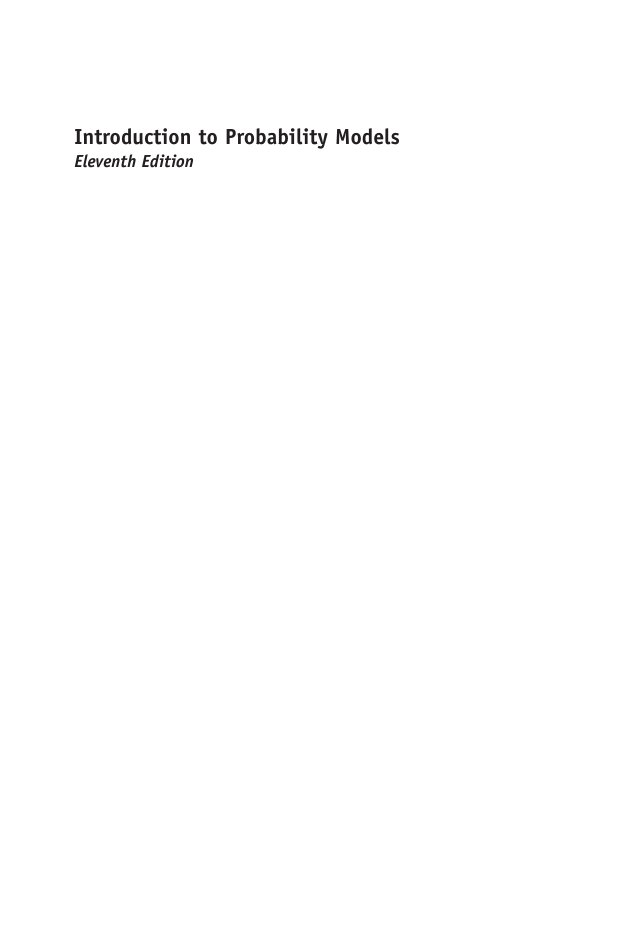

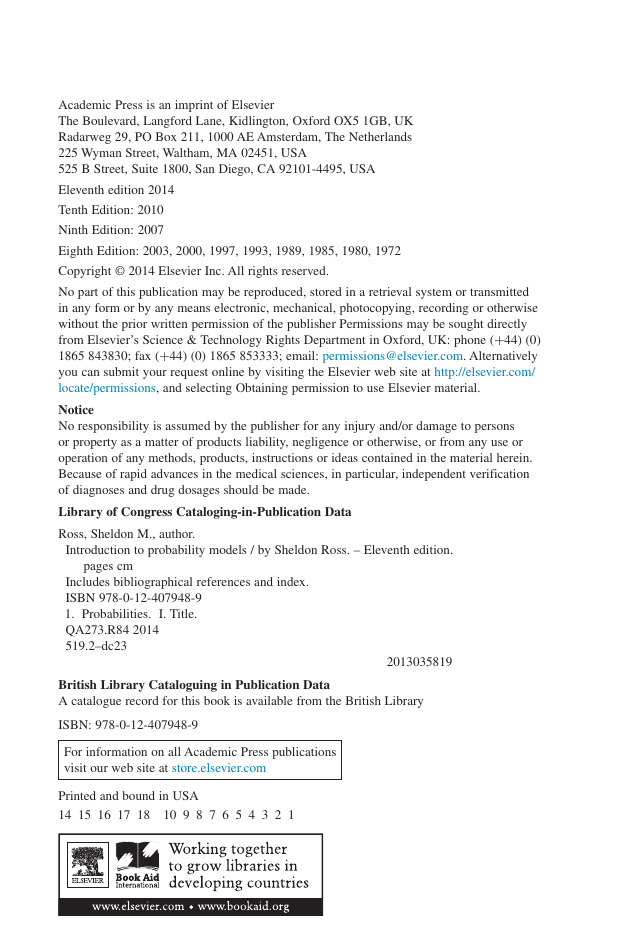
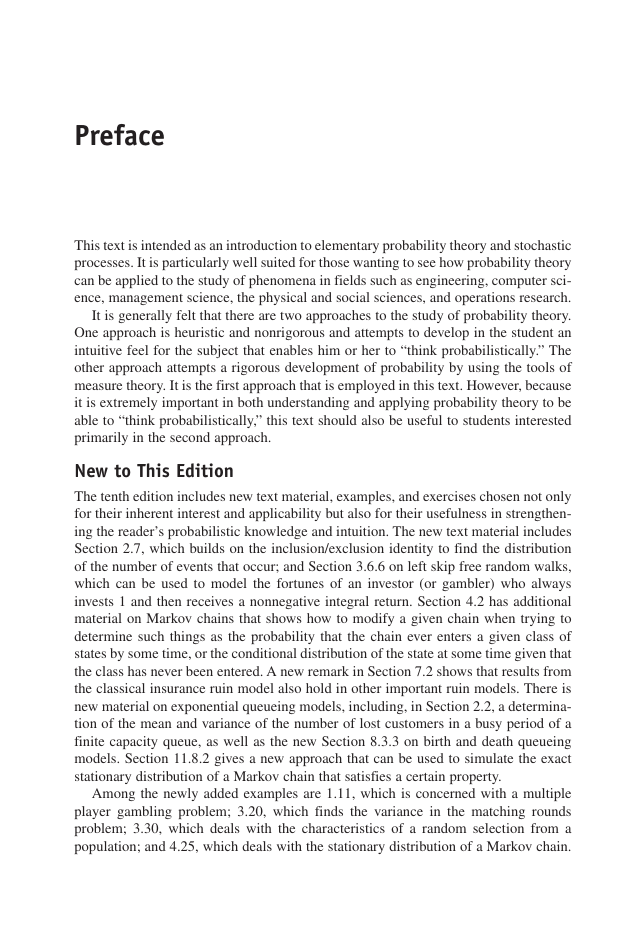

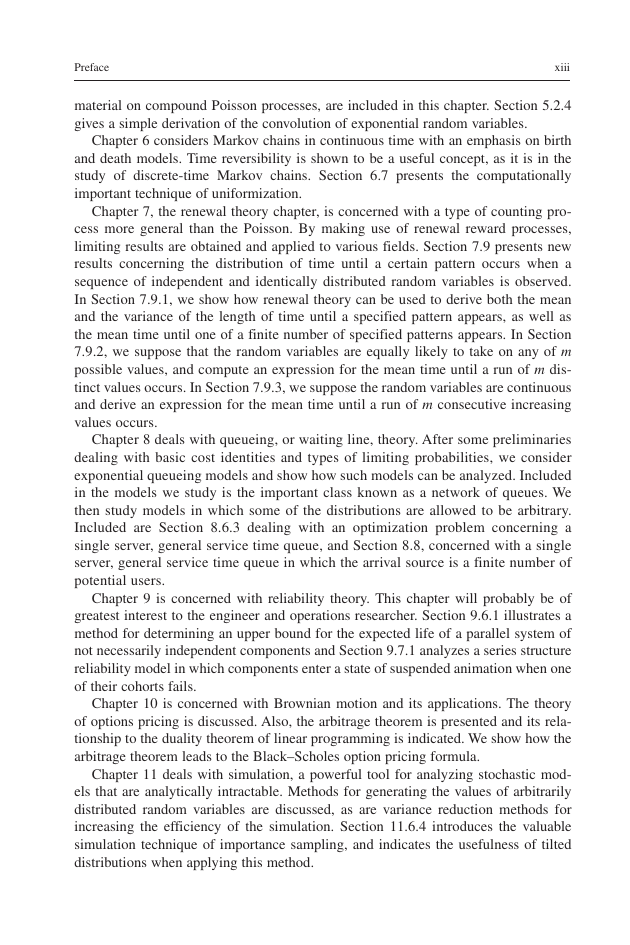
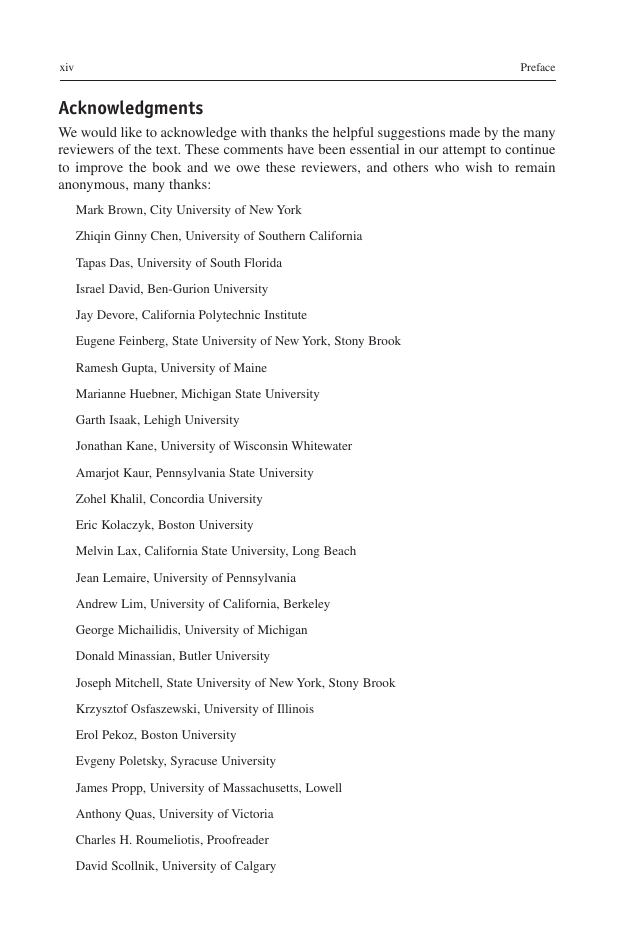
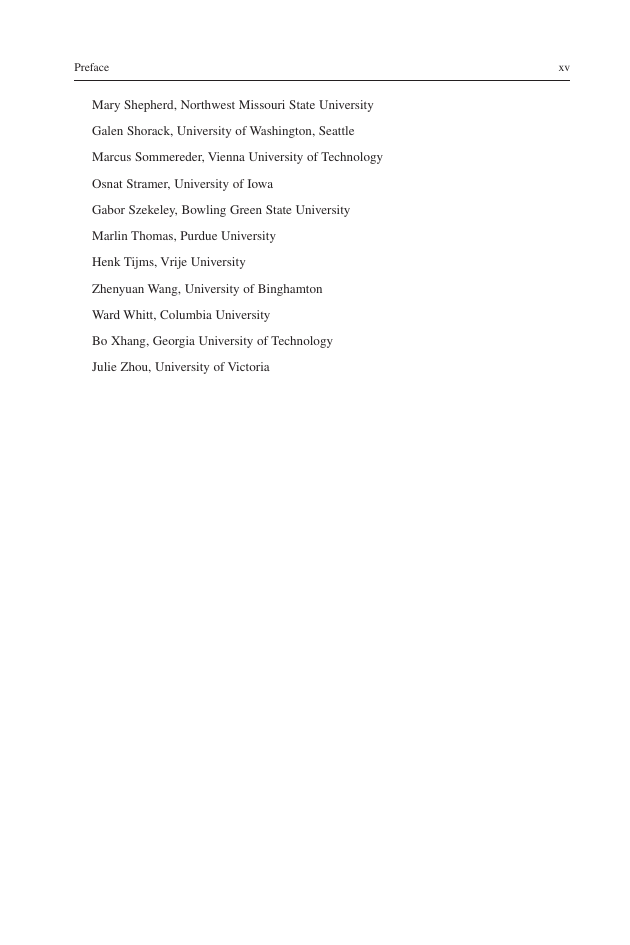








 2023年江西萍乡中考道德与法治真题及答案.doc
2023年江西萍乡中考道德与法治真题及答案.doc 2012年重庆南川中考生物真题及答案.doc
2012年重庆南川中考生物真题及答案.doc 2013年江西师范大学地理学综合及文艺理论基础考研真题.doc
2013年江西师范大学地理学综合及文艺理论基础考研真题.doc 2020年四川甘孜小升初语文真题及答案I卷.doc
2020年四川甘孜小升初语文真题及答案I卷.doc 2020年注册岩土工程师专业基础考试真题及答案.doc
2020年注册岩土工程师专业基础考试真题及答案.doc 2023-2024学年福建省厦门市九年级上学期数学月考试题及答案.doc
2023-2024学年福建省厦门市九年级上学期数学月考试题及答案.doc 2021-2022学年辽宁省沈阳市大东区九年级上学期语文期末试题及答案.doc
2021-2022学年辽宁省沈阳市大东区九年级上学期语文期末试题及答案.doc 2022-2023学年北京东城区初三第一学期物理期末试卷及答案.doc
2022-2023学年北京东城区初三第一学期物理期末试卷及答案.doc 2018上半年江西教师资格初中地理学科知识与教学能力真题及答案.doc
2018上半年江西教师资格初中地理学科知识与教学能力真题及答案.doc 2012年河北国家公务员申论考试真题及答案-省级.doc
2012年河北国家公务员申论考试真题及答案-省级.doc 2020-2021学年江苏省扬州市江都区邵樊片九年级上学期数学第一次质量检测试题及答案.doc
2020-2021学年江苏省扬州市江都区邵樊片九年级上学期数学第一次质量检测试题及答案.doc 2022下半年黑龙江教师资格证中学综合素质真题及答案.doc
2022下半年黑龙江教师资格证中学综合素质真题及答案.doc